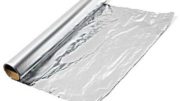The other day, an installer contacted me out of the blue. People find me and I’m happy to help with their concerns. It turns out the commercial DIRECTV system they installed was having problems and they wanted my opinion as to why.
Well there’s your problem

After talking to them and getting some photos, I discovered that the polarity locker was attached to the amplifier using barrel connectors like the one above. Two problems there: First of all that connector isn’t approved for satellite frequencies. Second, you really shouldn’t use something like that.
Satellite frequencies?
See, most equipment out there is rated to work with signals from 5MHz to 1000MHz. Those frequencies are used for antenna and cable television. However, satellite signals can use frequencies up to 3000MHz. You need equipment that is rated to work with those higher frequencies. If it’s not, you risk losing a lot of signal.
Why shouldn’t you use something like that?
In order to really understand why this sort of device is bad for satellite signals, you need to understand a lot about signal loss. If you’re interested in a longer article on the subject, check out this one. You don’t often see couplers like this with two male ends because they have lower return loss than female-to-female versions. (Low return loss is BAD. High return loss is GOOD.) It’s just a factor of how F connectors are designed. You’ll lose more signal, and gain more problems, with this kind of coupler.
What’s a better option?
I recommend that all devices be connected with jumpers no shorter than 12 inches. Some people recommend 24 inches but that’s overkill in most cases. The issue is reflection and that has to do with the wavelength of the signals.
Reflection happens when some of the signal gets bounced back instead of going through the cable. Think of how, if you pour water through a funnel too quickly, some will splash out. It’s kind of like that. In a connector with low return loss, a lot of the signal will bounce back into the jumper and not dissipate for at least the length of one wave.
Wavelength is a function of frequency. As frequency goes up, the waves get smaller. It makes sense, if you’re fitting 3,000 waves in every second of broadcast, each one will be shorter than if you’re fitting 50 in each second.
In the case of satellite, the lowest frequency you deal with for signal is 950MHz. That happens to correspond to a wavelength of about one foot. So, even in a weak cable, any reflections will dissipate in one foot or less. That’s why I recommend all jumpers be one foot or longer. If you’re working with the lower frequencies used by cable or off-air, you might want to make sure that jumpers are even longer.
Get the best cables at Solid Signal
No matter what your project, you’ll always find the best cables at the best prices when you shop at SolidSignal.com. No one beats our selection, so whether you’re looking for something for a home project or the largest commercial project, you’ll find what you need!





